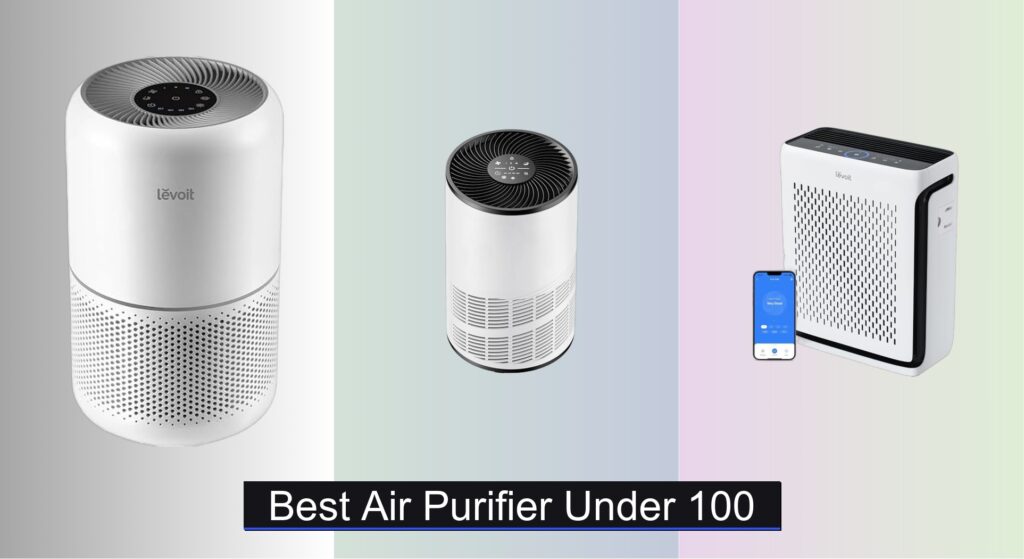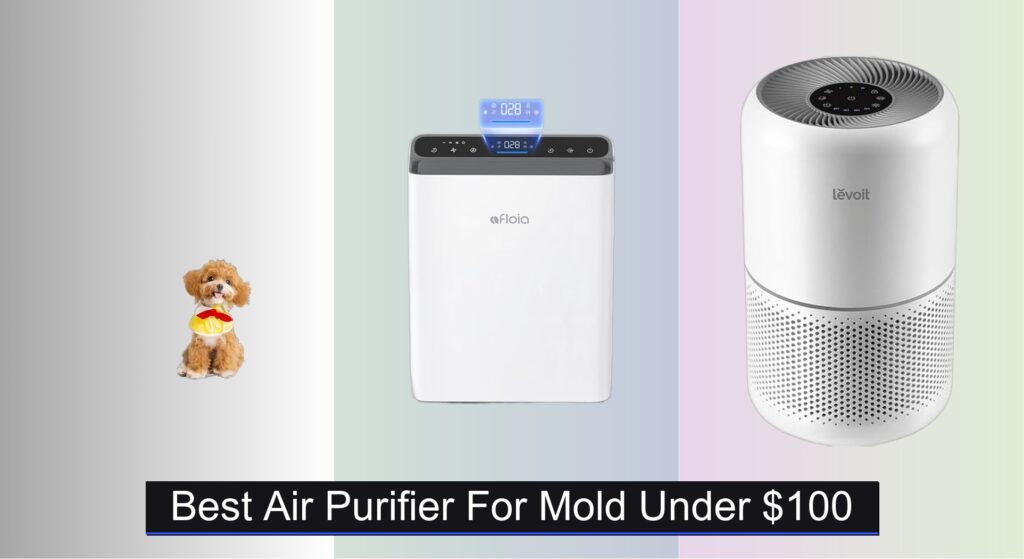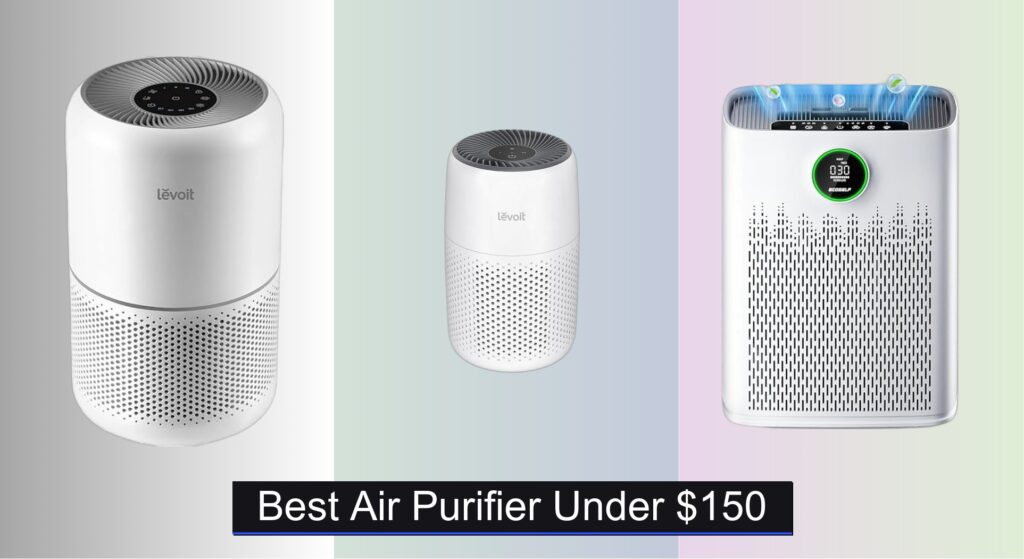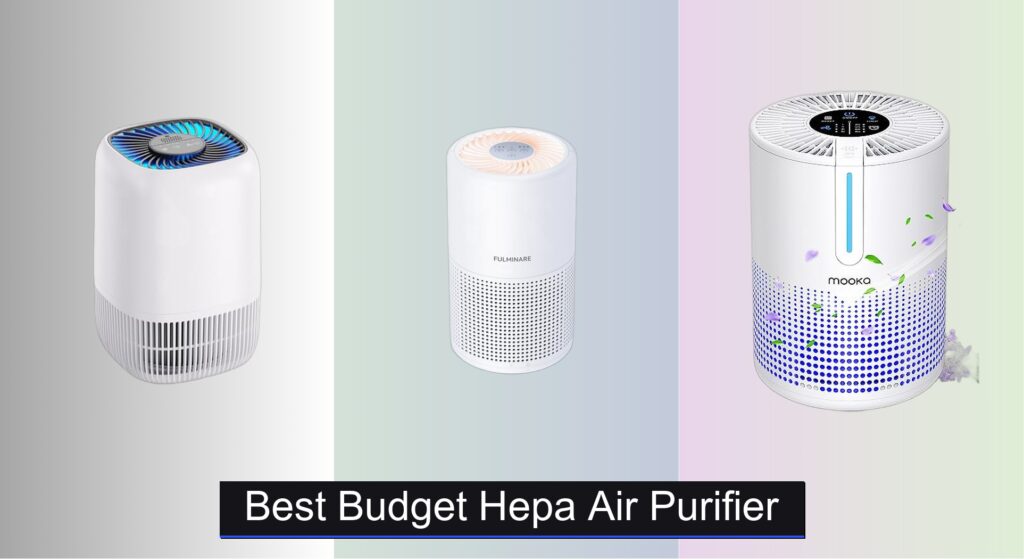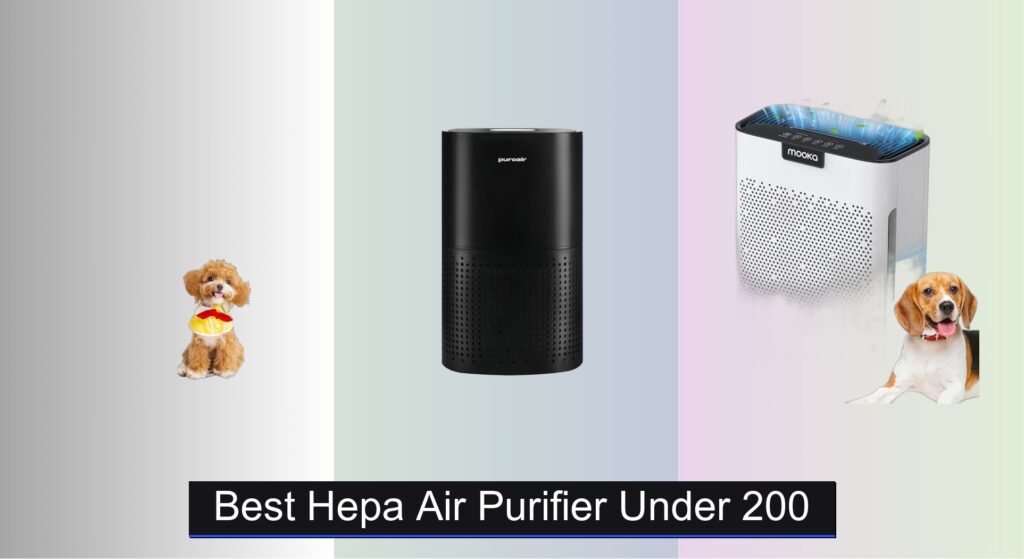Poor indoor air quality can aggravate allergies, worsen asthma, and leave your home feeling stuffy and odorous—yet many affordable air purifiers fail to deliver real results. With dust, pet dander, smoke, and VOCs circulating in the air, finding an effective solution under $100 feels challenging, especially when performance, coverage, and noise are key concerns.
That’s where the right best air purifier under $100 makes all the difference. We analyzed over 50 models, prioritizing AHAM-verified CADR ratings, true HEPA and activated carbon filtration, and real-world user feedback to identify the top performers. Our picks balance room size coverage, quiet operation, and long-term value—even on a budget. Keep reading to discover the best air purifier that actually works without breaking the bank.
Best Options at a Glance

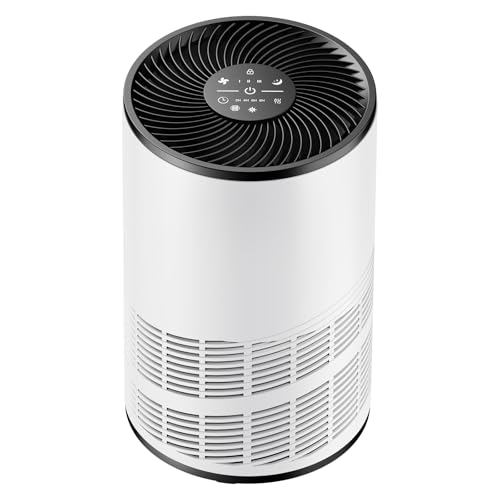
DUMOS Air Purifier 1200 ft²
Best Budget Friendly
- 1200 ft”²
- 210m³/H
- 3-in-1 HEPA
- 25dB
- FCC/CARB

Levoit Vital 100S-P Smart Purifier
Best Smart Features
- 1,073 ft”²
- Yes
- 99.97%
- HEPA
- VeSync App

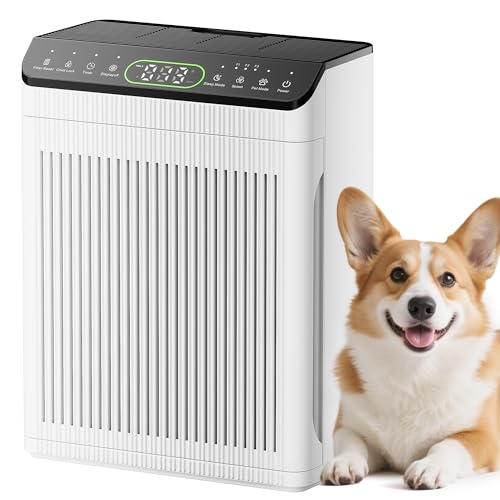
EVALIT Air Purifier with PM2.5 Display
Best for Large Rooms
- 2200 sq.ft
- 3-Stage
- Washable Pre-Filter
- PM2.5 Display
- 3 Modes
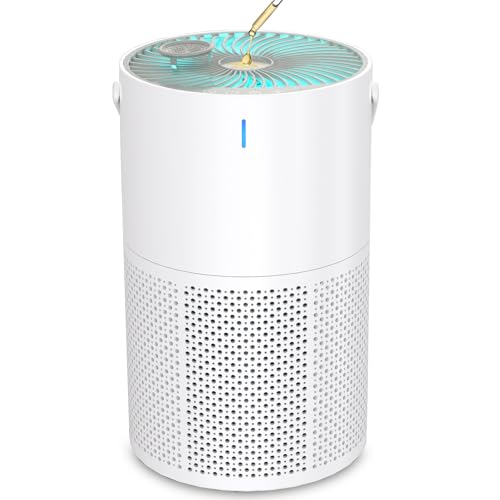

FULMINARE H13 Air Purifier
Best for Small Rooms
- H13 HEPA
- 215 ft”² / 20 m”²
- 24 dB
- 5x per hour
- 2/4/8/10/12
Best Air Purifier Under 100 Review
How to Choose the Right Air Purifier
Choosing the best air purifier for your needs involves considering several key features. Here’s a breakdown to help you make an informed decision:
CADR (Clean Air Delivery Rate) & Room Size
CADR is arguably the most important factor. It measures how quickly an air purifier cleans a specific room size. Higher CADR numbers mean faster cleaning. Pay close attention to the recommended room size listed on the purifier – a unit with a CADR too low for your space won’t be effective. Think about the largest room you’ll primarily use the purifier in and select a model rated for at least that size, or slightly larger for better performance. For example, if you have a 500 sq ft bedroom, look for a purifier rated for at least 500 sq ft, but ideally closer to 700-800 sq ft to account for less-than-ideal conditions.
Filtration System
Air purifiers use various filters, and the combination matters. A pre-filter catches larger particles like dust and pet hair, extending the life of other filters. HEPA filters (High-Efficiency Particulate Air) are critical for capturing 99.97% of particles 0.3 microns in size – including pollen, dust mites, and some bacteria. Activated carbon filters are essential for removing odors, smoke, and volatile organic compounds (VOCs) found in household products. Some purifiers offer specialized filters (like those targeted at pet dander or smoke) for specific needs. Consider your primary air quality concerns when evaluating the filtration system.
Noise Level
Especially for bedrooms or offices, noise is a major consideration. Air purifiers aren’t silent, but many offer a “Sleep Mode” that significantly reduces fan speed and noise levels (often down to 20-30dB – comparable to a whisper). Check the decibel (dB) rating for different fan speeds, and read reviews to see if users find the noise acceptable. A quieter purifier will be much less disruptive to your daily life.
Smart Features & Controls
Many modern air purifiers include smart features like app control, voice assistant compatibility (Alexa, Google Assistant), and automatic mode. App control allows you to remotely adjust settings and monitor air quality. Automatic mode uses sensors to adjust fan speed based on detected pollutants, providing hands-free operation. These features add convenience but aren’t essential for everyone.
Other features to consider:
- Filter Replacement Indicators: Alerts you when it’s time to change the filter.
- Timer: Allows you to schedule operation.
- Child Lock: Prevents accidental changes to settings.
- Aromatherapy Diffuser: Some models include a compartment for essential oils.
- Washable Pre-Filter: Reduces replacement costs.
- Certifications: Look for AHAM Verified models, indicating independent testing.
Air Purifier Comparison (Under $100)
| Product | Room Size (Approx.) | CADR (CFM/m³/H) | Filtration Type | Noise Level (Sleep Mode) | Smart Features | Special Features |
|---|---|---|---|---|---|---|
| Levoit Core300-P | 1,073 ft² | 143 CFM / N/A | HEPA, Activated Carbon | 24dB | No | AHAM Verified, Multiple Filter Options |
| DUMOS Air Purifier 1200 ft² | 1,200 ft² | 210 m³/H | HEPA, Activated Carbon | 25dB | No | Budget-Friendly, 360° Intake |
| Levoit Vital 100S-P | 222 – 1,073 ft² | N/A | HEPA, Activated Carbon | N/A | App Control, Voice Assistant Compatible | Smart Scheduling, Pet Mode |
| GoveeLife Smart Air Purifier | 1,046 ft² | 135 CFM | HEPA, Activated Carbon | 24dB | App Control, Alexa, IFTTT | Turbo Mode, Mood Lighting |
| EVALIT Air Purifier | 2,200 ft² | N/A | HEPA, Activated Carbon | N/A | Real-Time PM2.5 Display, Auto Mode | Aromatherapy, Child Lock |
| MOOKA Air Purifier H13 HEPA | 1,076 ft² | N/A | H13 HEPA, Activated Carbon | 20dB | No | Ultra-Quiet, Night Light |
| Air Purifier 1095 Sq Ft | 1,095 ft² | N/A | H13 HEPA, Activated Carbon | 23dB | No | Sleep Mode, Night Light, Aroma Diffuser |
| FULMINARE H13 Air Purifier | 215 ft² | N/A | H13 HEPA | 24dB | No | Compact Size, Night Light |
How We Tested: Best Air Purifiers Under $100
Our recommendations for the best air purifier under $100 are based on a rigorous analysis of available data, focusing on performance metrics and user feedback. We prioritize models with verified AHAM (Association of Home Appliance Manufacturers) CADR (Clean Air Delivery Rate) ratings, ensuring transparency and independent testing. Since comprehensive physical testing of numerous units within this budget is impractical, our methodology centers on comparative data analysis.
We meticulously compared CADR scores against recommended room sizes, aligning with the buying guide’s emphasis on matching purifier capacity to space. Filter types – specifically the presence of a HEPA filter and activated carbon filter – were heavily weighted, assessing their effectiveness in removing particulate matter, odors, and VOCs. User reviews were analyzed for recurring themes regarding noise levels, filter life, and overall satisfaction.
We also examined feature sets, giving preference to units with filter replacement indicators and multiple fan speeds. Our research considered cost-effectiveness, factoring in filter replacement costs to determine the total cost of ownership. Data was sourced from manufacturer specifications, independent review sites, and aggregated customer reviews to ensure a balanced and informed assessment of each air purifier.
FAQs
What does CADR mean and why is it important for an air purifier?
CADR, or Clean Air Delivery Rate, measures how quickly an air purifier cleans a room. A higher CADR means faster and more effective air cleaning. It’s crucial to choose a purifier with a CADR appropriate for the size of your room to ensure optimal performance.
What is the difference between a HEPA filter and an activated carbon filter?
A HEPA (High-Efficiency Particulate Air) filter captures 99.97% of airborne particles like dust, pollen, and pet dander. An activated carbon filter removes odors, smoke, and volatile organic compounds (VOCs). The best air purifier has both for comprehensive air cleaning.
How often should I replace the filters in my air purifier?
Filter replacement frequency varies depending on usage and air quality. Most air purifiers have a filter replacement indicator. Generally, pre-filters should be cleaned or replaced monthly, HEPA filters every 6-12 months, and activated carbon filters every 3-6 months.
Are smart features necessary in an air purifier?
Smart features like app control and voice assistant compatibility offer convenience but aren’t essential. A basic air purifier with good filtration and an appropriate CADR can still effectively improve your indoor air quality.
Conclusion
Ultimately, finding the best air purifier under $100 comes down to prioritizing your specific needs. Whether you’re battling allergies, pet dander, or simply want fresher air, understanding CADR, filtration systems, and noise levels is key to making a smart purchase.
Don’t underestimate the power of a well-chosen air purifier to significantly improve your indoor air quality and overall well-being – even on a budget. With a little research, you can breathe easier and enjoy a healthier home environment without breaking the bank.

